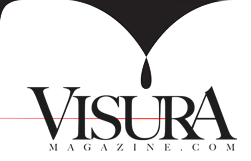
The camera is a way to get close, and to break free. It is a testimony to independence as well as a new way to relate to my family. My work is a documentation of closeness, as well as a need to establish a boundary, a certain distance between them and myself, in a detached and related way.
When I began photographing my family I was mostly intuitive, even impulsive, in the way I shot. For a short period, I tried to turn to what I thought was professional photography. I recreated actual situations with black and white film, which resulted in more structured and posed images. I did not like what came out, so I took a break.
When I returned to photography—I was about 21 years old. Instead of staged images, I decided to do what I did when I first started: shoot things as they were happening. I returned to color film which is, for me, warmer, more vivid.
I gave no advance warning, required no cooperation, shot in quantity. Snapped, developed, looked at the results, and over again. For the most part it was still my mother and me, but working intensively, and instinctively, everyone who was intertwined in our lives: my father, my brother Pinni, Eran, my grandparents, my cousins—all were drawn in. The frame became flexible and hospitable. Things I had previously considered marginal drifted to the center and often became themes in their own right. Ironically, the closer I got to the details, the more I zoomed in, the more universal the themes turned out to be. Minute details—a mark on the skin, a stitch, a hair, an eye, a kiss—carried the work beyond the boundaries of my family.
The presence of the camera became more familiar and more relaxed. Still, it’s like facing a mirror: when you look into it, you tighten your face muscles and slightly change your expression. Through my images, we all began discovering more about ourselves, or at least, discovering nuances we could not otherwise see. I later titled this series Closer.
In 2002, I photographed a very difficult time in my relationship with my husband, Eran. This series is titled Crisis. It was photography that allowed me to step away, to see what was going on, even what was about to happen. The fact that Eran let me take those pictures, in the middle of these difficult situations, in a way, let me reconnect with him. At times he used my pictures to tell me what he could not say. I felt the need to title those images in a more specific way then I did with my work in the past, giving more information. With a few words, a documented moment was changed, making it possible for viewers to see its meaning and importance, just by pointing out this is what it is about.
For ten years, I was a professional Middle Eastern dancer, or as it is called in the West, a belly dancer. During a period of three years, I photographed a collection of images, in which I performed mostly around New York City’s five boroughs, and parts of New Jersey. A series of fleeting glimpses, these images reflect the way I actually experienced the journey. I titled it Diary of a Dancer. I never stayed in one place too long and never got to know the people well. I was always on the move, amazed and fascinated by what I saw. I saw a lot in short periods of time. Short but intense, and when I was dancing even more intense. You feel things differently, you feel time differently, when you’re there at the center of things, entertaining, moving: you are both more and less aware of your surroundings, and both more and less concentrated on yourself.
I wanted to photograph myself while dancing too, and I knew which moments in the dance I wanted to capture. That was when Eran, my husband, came to my aid. Some of the photographs in this collection are a collaboration between us, a few of them are Eran’s own take on the situation, his own work.
The contrast is between me and myself, Elinor, photographer by day, belly dancer by night. When dancing, I often felt an extreme closeness and love for the audience, easily forgiving anything rude they might have done or said, accepting whoever they were. Before and after the show I was totally by myself, a stranger. I needed to be by myself, I needed to be lonely, isolated, to get to the point where I crave their enthusiasm and warmth: without this thirst, I would not want to give as much.
My work has never been a burden for my family. As revealing as it might be, I never subscribed to the idea of art over life, certainly not in my relationships with them. I try to resist the temptation of the provocative and the vulgar. My photographs thrive on intimacy and I cannot afford to undermine it. I do not show intimacy in any general way, if there is such a thing as general intimacy. I can only say something universal about intimacy through actual intimacy. Mine. The real relationships I have with specific people, that I love. The deepest I can reach is within what is familiar and close. So I set limits. I do not pounce on my mother when she’s waking up, I do not get the camera when I have a fight with Eran, I do not stand aside to document when someone is crying.
In many ways, my family not only helped me, but they became part of the work to such an extent that I do not consider it only as my own. It is, truly, also theirs.
www.elinorcarucci.com





